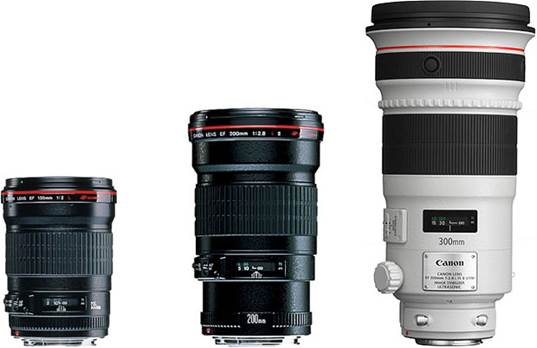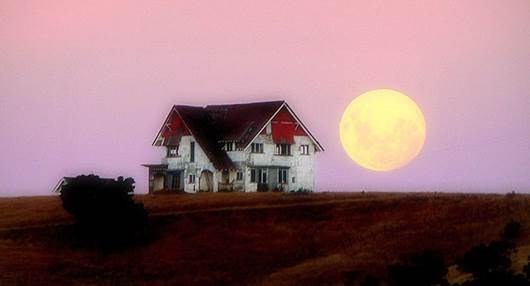Discover the inner workings of long reach
optics, when to use them and which to buy.
Wildlife, sports, abstracts, portraits,
macro, candids, food, products, and landscape: with so many different
photographic subjects out there to spark your creativity, it can be difficult
to cover all eventualities with just one lens. Once you’ve mastered the basics
of photography and discovered your ‘niche’, the best way to move forward is to
invest in a specialist lens to suit your chosen genre. Doing so will not only
make the task of photographing your subject of choice easier, but – if you
spend your money wisely – you’ll also improve the overall quality of your
photographs and maximise the potential of your interchangeable lens camera.

A
telephoto lens is a type of camera lens designed for taking photographs of
subjects at moderate to far distance
Go long
The kit lenses that tend to be bundled with
DSLRs usually cover a useful everyday focal range; typically 18-55mm (35mm
equivalent) or similar. While this is fine for wide shots of range subjects for
instance, 55mm isn’t enough for filling the frame with more distant subject
matter. If you regularly find yourself frustrated by the limitations imposed by
the reach of your kit lens, then it’s time to go for a telephoto.
Long and short of it
Telephoto optics come in a variety of
‘flavours’; with medium optics offering a focal range of around 70-135mm (35mm
equivalent), standard telephoto lenses covering around 135-300mm and extreme
telephotos reaching anything past the 300mm mark. You can also invest in optics
that cover larger focal ranges; however these do come with their drawbacks, all
of which we’ll discuss momentarily.
Which is best for you?
For example, a medium telephoto can prove
useful for capturing moderately distant subjects without having to get too
close yourself. If you need to stand further back from your subject in the case
of wildlife or sports photography for example then a standard telephoto lens
could fulfill your needs. Photographers that are restricted further in terms of
the proximity to which they can approach their subject again, sport and
wildlife, as well as long-range candids or specialist applications like
astrophotography are best off purchasing an extreme telephoto lens to provide
them with the reach they need.

Canon
reveals L-series super-telephoto lenses
Fixed or flexible?
There are pros and cons to buying zoom
lenses versus prime (fixed focal length) varieties. Obviously a zoom lens will
provide a greater level of flexibility, allowing you to fine tune your
composition without physically having to move yourself. This is useful in
situations where you have to remain still to avoid disturbing your subject
(e.g. wildlife photography) or have restricted mobility (e.g. at a sports
event). On the flip side, these versatile optics do come with potential
implications for overall image quality. Inside such a lens, the elements that
focus light onto your sensor in order to resolve the image are mounted on a
moving platform, which moves the elements closer together and further away from
one another as you zoom in and out. This makes it trickier for lens
manufacturers to ensure these elements are perfectly aligned at every focal
length, leading to some potential distortion, chromatic aberration and/or
softening of detail at some focal lengths/apertures.

We
learned to understand the characteristics of wide angle and telephoto lenses
and when each might be appropriate
Prime lenses on the other hand have their
glass elements fixed in place and there are fewer of them, allowing for more
precise positioning and improved optical performance as a result. These lenses
while not necessarily always distortion/aberration-free do tend to come with a
promise of better all-round image quality and level of sharpness compared to
their zoom counterparts. Issues here, however, include the lack of ability to
recompose your shots without having to physically relocate yourself and your
kit, as well as often coming with a pretty sizeable price tag. As such, the
biggest, fastest, fixed focal length telephotos often remain the reserve of
professionals that require the very best image quality for their work, although
there are some bargains to be had that many serious enthusiasts might like to
consider.
Price vs. Performance
Generally when it comes to lenses you get
what you pay for. Unlike DSLR bodies that depreciate quickly in price soon
after their launch, lenses tend to hold their value better and as such make for
a sensible investment if you’re looking for a way to take your photography to
the next level. We always advocate upgrading your lens(es) before shelling out
for a new DSLR body; it’s the best way to get the most out of your camera’s
sensor and maximize the quality of your images. Moreover, once you’ve really
outgrown your current camera and it’s time to upgrade, you can continue to use
your lens collection (assuming you opt for the same brand). Within each of the
focal length categories, each telephoto lens will offer a different set of
technologies and features that it’s worth taking the time to fathom before you
commit to a purchase: doing so will ensure you get the most bang for your buck.
On a budget?
While it’s true that generally with cheaper
lenses you tend to get more basic features than pricier models, that doesn’t
necessarily mean they’re ‘bad’. Recent launches from many manufacturers have
proven their mettle in reviews and in-depth tests, with many basic models
offering an improved optical performance over their predecessors. If you shop
around, you can also pick up more affordable telephotos with features like
optical image stabilization, although you may find you miss out on higher-end
characteristics such as special lens coatings or silent motors for example.

The
telephoto lens from Rollei comes with a small tripod and an adapter for the
iPhone 4
Other attributes to watch out for include a
zoom lens’ maximum aperture (the smaller the f-number, the better the lens is
at gathering light). Cheaper models tend to have a variable maximum aperture
(e.g. f4-5.6), meaning that its light-gathering ability drops as you zoom in.
build quality is also likely to be lower around this price point, with more plastic
components being used for the lens barrel and sometimes the mount. With the
latter, it’s worth noting that over time wear and tear may degrade the security
of the mount when attached to your camera go for a metal mount if you can.
A bit more flush?
If you can stretch your budget a little
further, look out for features like a fixed maximum aperture that is, an
aperture value that remains the same regardless of the focal length of the
lens. The faster zoom lenses usually offer an aperture of around f2.8 or
thereabouts, making them better suited to low-light photography than their
slower variable-aperture alternatives. Build quality should be improved in the
mid-price-range bracket, with tougher plastics and metal components being used,
as well as more advances features like silent AF motors and non-rotating front
elements (useful if you like to use filters).

A
telephoto lens makes distant objects appear much larger
Blow the budget
If money’s no object, the sky’s the limit.
Top-of-the-range, professional-level telephoto lenses tend to be heavier and
bulkier than their lighter-weight, cheaper counterparts, but offer a more solid
construction and often weather-sealing. Higher-grade materials like metal and
top-quality glass are used in their manufacture, and elements often benefit
from specialized coatings to minimize issues like flare and ghosting, promising
excellent image quality. A slicker performance is also to be expected, thanks
to high-speed, silent AF motors and state-of-the-art image stabilization
systems, while internal focusing (where the front element of the lens does not
rotate during focusing) is almost always a welcome feature of lenses at the top
end of the market too.
Whatever your needs and budget, there’s a
telephoto lens out there for you. Armed with the information here, you’re
well-equipped to weigh up your options and make an informed choice: buy the
best lens you can afford and you’ll be making the best investment in the
progression of your photography.